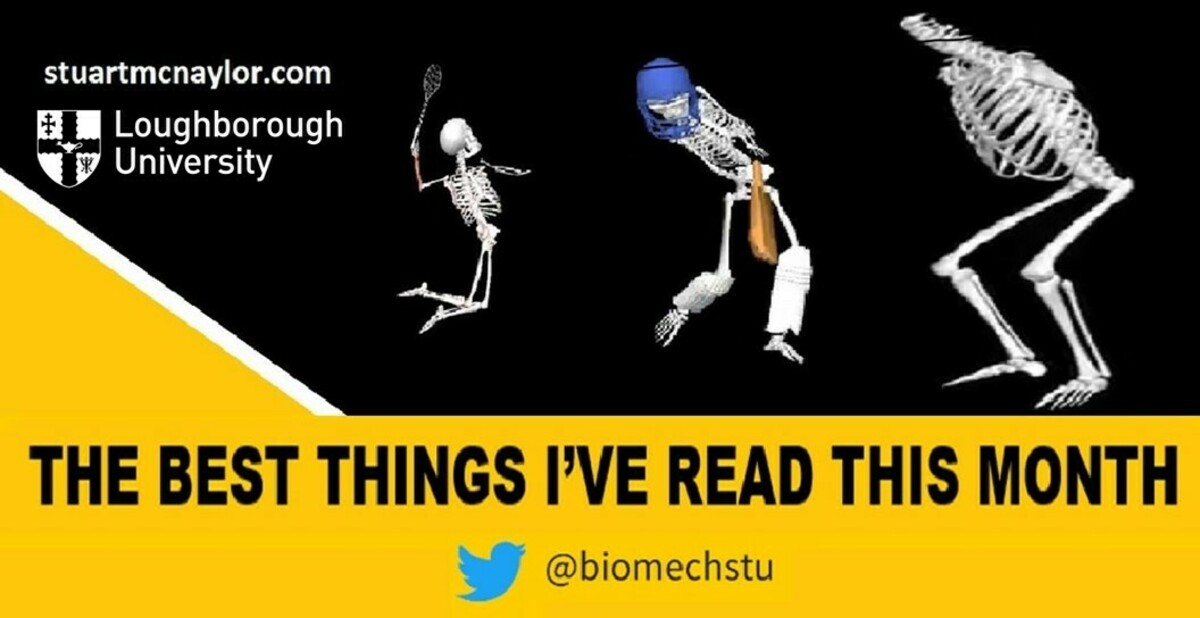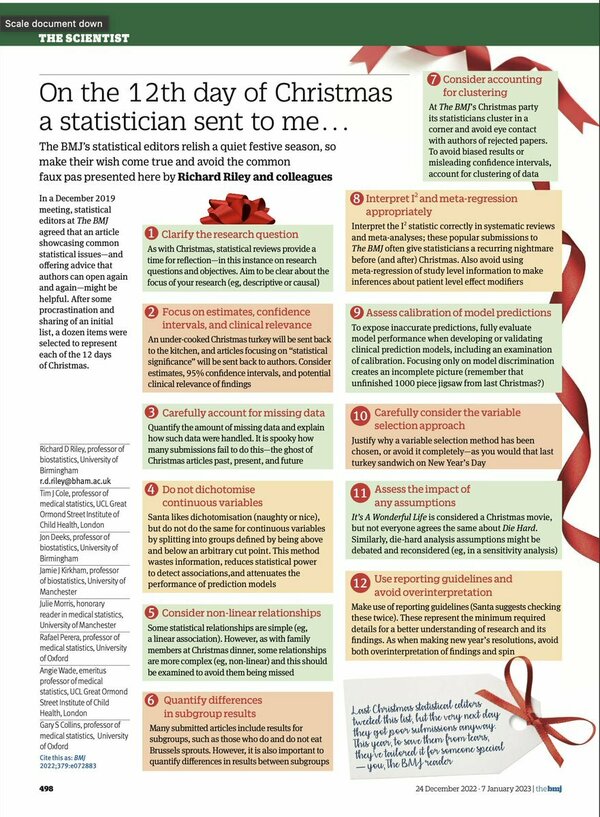
Happy New Year!
Firstly, I hope everybody reading this had a fantastic holiday period. I appreciate every person who takes the time to read or scroll through this newsletter. Twelve months ago, I said I’d like to grow it from its 292 readers and we’re gained over 400 more during 2022. I really hope you find the newsletter useful. Please share this link with anybody else you think might benefit. I can’t wait to see what our biomechanics community achieve in 2023!
Fully-Funded PhD Opportunity
I’m currently advertising a fully-funded PhD position alongside Prof Vicky Tolfrey at Loughborough University’s Peter Harrison Centre for Disability Sport. The project, in collaboration with the English Institute of Sport and UK Athletics, will quantify the key determinants of wheelchair racing training and performance across events and impairment groups using existing and emerging technologies. It is designed to make a performance impact for British wheelchair racing leading into Paris 2024 and helping with long-term strategies for Los Angeles 2028. See this link for further details, and please share with anybody you think may be suitable. Feel free to reply to this email with any questions.
Now let’s get started with the reading…
Injuries and Rehabilitation
ACL injuries: Sports Biomechanics published a Special Issue of nine articles on the biomechanics of anterior cruciate ligament injuries in sports. Three of the articles are Open Access (free for all to read). No, I haven’t read all of these, but nonetheless thought it was worth sharing the full list for anybody who might be interested in a literature deep-dive.
On-field rehabilitation in football: Okay, so this is one of ours snuck in to the list. The opinion article by Mark Armitage, PhD student and elite football physical performance coach, summarises current knowledge, applications, and future directions within on-field rehabilitation. Particular focus is given to two conceptual frameworks offering progressive stages for on-field rehabilitation.
No strain, no gain? The role of strain and load magnitude in human tendon responses and adaptation to loading. A review by Gerard McMahon covering theoretical and experimental findings, as well as potential pracical applications.
Wearables and Novel Approaches
Predict GRF from landing sound? This article presents a prediction of vertical ground reaction force during running from the sound of footsteps. The machine learning model was able to predict the ground reaction force profiles with a mean correlation coefficient of 0.99, relative root-mean-square error of 9.96%, and accuracy to define rearfoot or forefoot strike of 77%.
New study on @Sensors_MDPI, we used #MachineLearning to predict vertical ground reaction forces using sounds of footsteps during #running😎
— Anderson Oliveira, PhD (@OliveiraBiomech) December 13, 2022
~80% accuracy to classify rear/forefoot strikes, and a reasonable association between real and predicted forces
👇🏾https://t.co/myo4Byn10z pic.twitter.com/BtQSFHOjag
‘In the wild” movement analysis: This perspective article provides an overview of approaches for studies that aim to analysze sports movement ‘in the wild’ using wearable sensors and machine learning. This includes how a measurement protocol can be set up, benefits and pitfalls, and recommendations for effective training of machine learning models.
Algorithm aversion: On the subject of models and algorithms, this article shows that people who saw an algorithm perform were less confident in it and less likely to choose it over an inferior human predictor. This was true even among those who saw the algorithm outperform the human.
Pros and cons of wearable tech: “Just because you can measure something, doesn’t mean you should.” How can practitioners make the most of wearable technology, and decide what to measure and when? This recent blog post (the first of a 3-part series) does a great job of answering these and related questions.
Markerless MOCAP: Markerless Motion Capture in Sport: Panacea or Pandora’s Box? That’s the title of Paul Glazier’s recent post , questioning the value of markerless motion capture and applied biomechanics in general. A great thought-provoking piece to challenge perspectives and approaches within the discipline.
Open-Source Biomechanics
Biomechanics textbooks: This link , provided by Kyle Wasserberger of Driveline Baseball, provides free access to multiple biomechanics textbooks. Likewise, the start of a new textbook on learning Python for biomechanics is now available here .
Open baseball data: The OpenBiomechanics Project from Driveline Baseball includes raw and processed data from 100 baseball pitchers alongside analysis code.
Women in Biomechanics
“Solving the issue of female underrepresentation in biomechanics is not something that can be achieved overnight”. This fantastic post by Kim Duffy of Vicon shares her personal experiences as a woman in biomechanics and discusses the necessary steps to turn the sector into a place that is far more accommodating to women.
Strength and Conditioning in Cricket
Cricket fielding S&C: This is another one I was involved in. A narrative review of strength and conditioning for cricket fielding. The review provides a needs analysis, match demands, and injury epidemiology, as well as programming considerations for physical testing, program design, and youth fielders.
Statistics
Twelve days of statistical review: Twelve common statistical mistakes and how to avoid them, by The BMJ’s statistical editors. The article is also summarised in a handy 1-page graphic:
Replication concerns in sport science: a narrative review of selected methodological issues in sport and exercise science and how these may hinder replicability. Consequences and potential solutions are discussed.
Statistical analysis plans: This article provides a useful framework for crafting a statistical analysis plan at the start of a study.
Regularised regression: An overview of regularised regression and its potential applications within sports biomechanics research as an alternative to ordinary least squares regression. This article is written as an introduction to the topic, and even includes example code in both MATLAB and R.
Thank You
That’s all for this month. If you found it useful, please forward this email or share this link with colleagues, students, or on social media.
May all your New Year’s wishes come true! I’ve managed to stick to my writing promise so far, so hopefully that continues.
Take care, and thank you for reading. I hope you have a great start to 2023.
Stu
